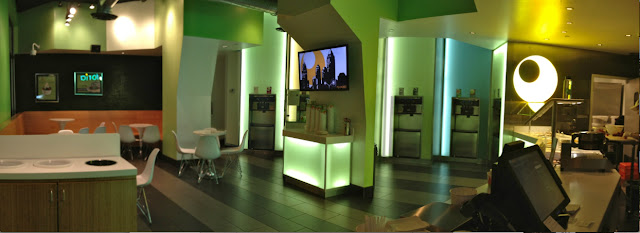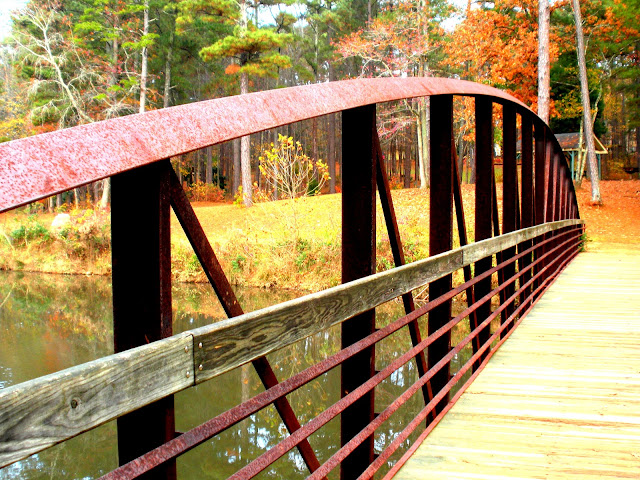Yoforia (Downtown Athens)
The Client:
- All ages and genders
- Health conscious, environmentally friendly, and organic
- Eat yogurt and socialize with family and friends
- To bring an “instant smile to every costumer, partner, and employee.”
- All ages and genders
- Health conscious, environmentally friendly, and organic
- Eat yogurt and socialize with family and friends
- To bring an “instant smile to every costumer, partner, and employee.”
The Floor Plan:
The Concept:
The concept of the Yoforia is organic/natural with many aesthetic elements. The organic design is seen in the bamboo seating, the green colors of the walls, and the astroturf on the walls.
Analyze:
My first impressions of the space was that is was over crowded, the center column was in the way, and the flow of the room was very ambiguous. I liked the space because all the design elements connected well, the space had a clean and sanitary look about it that is important in a food establishment, and it functioned as a yogurt shop. I did not like the space initially because the lighting was awful. It was extremely dark and the lighting panels around the yogurt machines were flickering and hurt my eyes. Overall, I was not pleased with the space when I walked in and would rather visit the other locations.
1. The intended purpose of this space is for people of all ages to eat yogurt and socialize.
2. The room is functional for the size, purpose, and intended user. The size is small but it does function as a yogurt shop. The purpose is fulfilled because the space has yogurt machines, a cash register, and seating area. This means the space is functional for its purpose. The space is successful in drawing in the intended user. While I was sitting in the shop every type of person and age group came in to get yogurt.
3. The principles and elements of design exist in the the space and are used to emphasize the design. Line is used in several places in the space. The first and most obvious place it is used is in the lighted panels behind the yogurt machines. The panels have lines that bring your eye up and see the hight of the room. Line is also used in the bamboo wood on the benches. The benches are a line and the grain is a use of line. The tables in the space a point and the chairs that go around them are repetition and rhythm.
4. The aesthetics of the yogurt shop are pleasing to the eye. There is a multitude of textures, shapes, and size. The most unique texture in the space is the astroturf wall. The space also has a lighted wall behind the yogurt machines. This looks amazing but it also was hard on the eyes. The lights flickered because they were incandescent bulbs. The light panels could have used different types of lights to help reduce the eye stress. The room also had over head track lighting and could have had more lights to brighten the room. The benches that were made out of bamboo were natural colored and pleasing to the eye. They were a good hight and sat well. The tables were round and mimicked the “o” in Yoforia. There space also had tile floors that contrasted well to the natural colors. There was a large amount of glass in the space that added to the clean look. All of the elements fit well together while giving the eye visual interest.
5. The room size should be larger than it is now. The room shape could be the same it just needs to be proportionally larger. The shape now is a rectangle meaning it is wider than longer. This shape functioned well because it allowed the area to have enough yogurt machines along the back wall but it needed to be deeper to have a bigger seating area.
6. The space needs light, chairs, tables, and trash cans. This interior does not need a large amount of furnishings because the space is not intended to hold people for an extended amount of time. The most important furnishing the space need is light to see, and chairs and tables. The amount of each of these is extremely important. It needs enough to seat people with out crowding the space. It needs a cash register near the exit so people can get their yogurt and then pay for it before they leave.
7. The furnishings and accessories should be arranged very similar to the way they already are but with a few modifications. The lighting needs to be brighter or add more overhead lighting. The tables and chairs should be moved further apart to accommodate people getting in and out of the tables. This will allow fluid access to the yogurt. The one table that is in the way of the circulation path should also be moved in and away from the center post. The tables are already grounded and zoned around the benches.
8. People should enter the room through the door, pick up a bowl in the center, walk around the column to the yogurt, and then beside the counter down to the cash register to pay.
9. The room connects to other interior spaces well. The bathroom is down the hall and and has a door. It connects but is not in an obvious place. The only other connection to another space is the swinging door behind the counter into the kitchen area. This should be a private area and only accessible by employes. Since the door is behind the counter this is achieved.
10. The room should connect to the exterior. It needs to connect to the exterior so that customers can come in and out of the shop. It also needs to have windows to connect the store to the exterior so that people walking by can see in and be drawn into the shop. The windows that connect to the exterior also allows natural light to be brought into the space.
11. The space is multilayered and rich. It would be hard to add to this space. The space is multilayered because of the column in the middle and rich due to the many shapes and textures in the space. If the space was changed to be longer it would make it be easier to be multilayered.
Conclusions:
My first impressions of the space was it was not successful and my final analysis reviled that the space is not successful. The space functions as a yogurt shop, but it is not successfully functional. The flow is very broken, there is not central focal point, and there is not enough seating for the amount of people who want to sit down.
My first impressions of the space was it was not successful and my final analysis reviled that the space is not successful. The space functions as a yogurt shop, but it is not successfully functional. The flow is very broken, there is not central focal point, and there is not enough seating for the amount of people who want to sit down.













































































